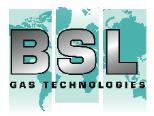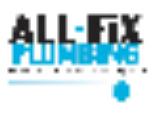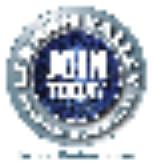 | ||
Ten ways to help you save money on print
Buying print takes practice and knowledge that the majority of businesses will never get to acquire. Anyone who handles it everyday across a wide variety of jobs will quickly get to know the necessary fundamentals to save money.
Many of the statements in this article have been simplified and there are exceptions to every rule, it has been written in everyday language as a general guide only.
Here's a few tips from a seasoned print buyer:-
1. Quantity. Never buy more than you need. If you need 500 for distribution and a few for stock to see you through for 12 months then buy 500, don't be tempted by the fact that another 500 only cost a fraction of the first 500 if you order them in one go. Inevitably you will want to update and change the item so avoid waste, generally only buy what you need for 6 or 12 months.
2. Thicknesses. Get to know the weight of the paper you use. We all know 80 gsm it's the one that goes in the photocopier! And the fax machine. Letterheads are more frequently printed on 100 gsm these days, and sometimes the 'luxury' version on 120 gsm. If your printer or photocopier is always giving you problems this could be why - the machinery doesn't ike the thickness of the paper. Leaflets are printed on 135 gsm, sometimes 150 gsm and again the 'luxury' version 170 gsm. One thing to look out for is paper so thin that it shows through from the other side. 80 gsm paper is not suitable for two sided printing. Business cards of any quality will be on 250 gsm, the 'luxury' version on 350 gsm and sometimes laminated as well. Avoid free offers from websites that will damage your reputation every time you give out your card! Folders and more prestigious printing jobs are printed on 400 gsm. None of these thicknesses are 'rules' but just general guidance, if you want your job to feel really top notch go thick. Thicker costs more.
3. Size. It matters so learn. A4 is a letterhead, 297 mm x 210 mm. Compliment slips are generally one third A4, 99 mm x 210 mm. Business cards are around 55 mm x 88 mm or credit card size if that is what you specify 54 mm x 85 mm. A5 is half the size of an A4. A3 is twice the size of an A4. Post cards are A6 (a quarter of A4). Generally these are the basic sizes you'll come across in most offices. Printing on standard sizes keeps the cost down.
4. Pages. Many printers these days seem to prefer customers to talk in pages. If you talk in folds make sure you make the printer understand what a fold is. Do not confuse folds and pages. For example an A4 sheet folded twice makes a 6 page DL (DL being a third A4). Let's go through that again. What you want is a standard one third A4 leaflet that will go in a standard business envelope or the inside of a gents jacket pocket when you're handing them out at meetings. It will be 99 mm x 210 mm when it is folded up. The printer will print on an A4 piece of paper and fold it twice making 3 'pages' on each side - the fact it is double sided makes it a 6 pager.
5. Colour. It is still possible to save money by buying print that isn't full colour. Even ten years ago designers used their skills more frequently to produce interesting designs with just one or two colours. As printing technology has advanced the price of full colour or four colour printing has reduced, but many printers still use one and two colour machines that will enable you to save money against full colour print. Full or four colour printing is where CMYK is printed to make up virtually every colour you'll ever need. C is for Cyan (a turquoise); M is for Magenta (a bright deep pink); Y is for Yellow (a bright lemon yellow) and K is for black. All four colours printed on top of one another make the deepest black.
6. Litho or Digital. Two commonly used descriptions. For short run printing, generally up to 500 would be produced digitally and cheaper than litho. Litho printing starts to save money above 500 usually about 1,000 run. Longer runs are more usually printed Litho. Quality wise there is little to chose from them these days and as technology advances digital printing can be used on most types of paper. With digital printing it is possible to print just one copy.
7. Proof. However you print make sure that the person handling your print shows you a proof before printing anything. A responsible printer will always make you sign a copy of the proof so you take the responsibility for your work. Check the proof very carefully and get any mistakes corrected and then ask for another proof. If you have not checked it and just signed it any mistakes discovered after the job is finished will be your fault.
8. Print buyers. You may have experienced what appears to be a sudden and unexpected hike in a price from your regular printer - the reason why is simple, he doesn't have the machinery he needs to complete that job in house, so he is buying in from 'outside'. It has always been a common practice and there is certainly nothing wrong in striving that way to fulfill a customer's request. So there are several advantages to using people who supply print as part of their everyday job, agencies and design studios for example. Firstly they are experienced in print and they will know where to secure the best deals for the type of print required. Secondly if anything goes wrong midway they will sort the problem out. And thirdly they can help you get the requirements of the job sorted out.
9. No need for printing. With the online technology came the opportunity to have magazines without any printing at all. If you don't know what we're talking about try these two links: Price list. Magazine. And bear in mind on the magazine the email and web links are live so one click gets you to an advertisers website!
10. The final word. Print is not just about cost, it is about getting quality print that gets the message across and creates sales. I have only ever heard printers talk about price and "How many do you want?" The design professional will ask you what the leaflet is for and what is the message you are trying to get across (words are frequently more important than pictures). Which is the most important thing you? The cheapest price or the fact that the printing has a purpose to achieve and it must perform?
Custom Marketing Resources handles print of all types and all sizes - from business cards to multi page full colour magazines. We have been keeping customers happy since we started in business on 14 October 1994 (most are repeat customers too) .

Alan Reading has presented for Business Link, Enterprise Agencies, Chambers of Commerce, conferences and seminars for The British Hardware Federation, The Newspaper Society, the Association of Free Newspapers, training and marketing companies on starting, promoting and marketing business.
He is an award winning designer, has judged more than his fair share of design awards, hosted breakfasts, lunches, dinners, balls and networking events, compéred fashion shows, radio programmes and appeared on TV more than once, frequently on behalf of clients.
Alan is a business minded Designer (past President - and Chairman - of 3 Chambers in Kent) running his own business - Custom Marketing Resources (01622 820841) - since 1994. You will learn even more - and see what his customers say about him - on his website http://www.cmr-group.co.uk He is willing to provide free advice by phone too.
Register with CMR by email today - there's always something new to hear. creative@cmr-group.co.uk






